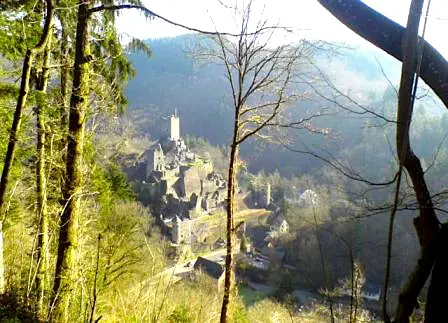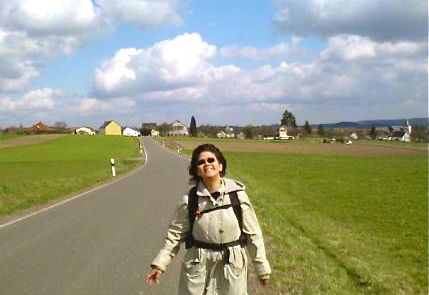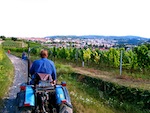The German Forest
One more reason to go hiking in Germany’s forests: they may not be there for much longer. In 20 or 30 years, there will still be life in the German countryside, but perhaps not as we know it.
In the 1980s, the German forest appeared to be on its last leaves. The German press was horrified. “Up there, all summits are toxic” was the title of a cover story in stern, Germany’s largest popular magazine (an allusion to Goethe’s famous poem “up there, all summits are still”), and the news magazine Der Spiegel followed with a three-part story which simply claimed that “The forest is dying”.
In 2000, it was confidently predicted, much-cherished parts of the German landscape such as the Black Forest would look like the Russian tundra. Oklahoma. The Gobi Desert. It was, for all intents and purposes, Der Untergang des Abendlandes, the Decline and Fall of the West.
The German government reacted by doing what German governments pride themselves on doing in times of crisis: they analyzed the situation, identified the problem and engineered a solution.
How much this solution would eventually cost, everybody agreed at the time, would be of secondary importance. (These were, after all, Germany’s bachelor days, when the country still had a lot of disposable income – before the kids arrived: East Germany first, then … well, you know the story.)
The problem of the German forest, scientists said, was acid rain, caused in turn by air pollution. The solution they consequently engineered involved a drastic reduction of emissions from industry and cars. Flue-gas desulphurization became compulsory for power stations, and all cars in Germany had to be equipped with catalytic converters.
Until this very day, people in Germany disagree about the extent to which the original diagnosis was influenced by moral panic and to what extent the recovery was assisted by processes already under way, but whatever the therapy that was prescribed by the tree doctors actually achieved, it certainly followed the first principle of the Hippocratic oath and did no harm.
In fact, the forests thrived as even the doomsayers had to admit (although Der Spiegel opted to label the sudden spurt of forest fertility as the “wrong kind of growth” and saw in it the “harbinger of ultimate destruction”.)
Today, the concentrations of lead in the upper layers of the forest soil are far smaller than the concentrations in the lower levels, and this – however you want to look at it – must qualify as some sort of success.
Over the years, other things happened in Europe: the Communist governments fell, the wall came down, Germany was unified, and eventually, the public lost interest in the story. That allowed sobriety to make a comeback, and when even the Chair of the Green Party – which had used the controversy as a springboard into national politics – declared that the crisis of the German forest was over, the media took their eyes off the trees.
Which is why the recent survey about the health of the German forest came as such a big shock to almost everyone. Only 25 percent of all trees, the survey said, were completely healthy and undamaged. This was the worst figure in 30 years, worse even than in the 1980s.
This time, however, there was practically no immediate reaction from the German government. In truth, there is not much the government could do: the immediate cause for the renewed crisis of the German forest was the unusually dry autumn, while the underlying cause is the slow but steady change of basic climate patterns. There is not only too little rain, but also, increasingly, rain at the wrong times of the year and in wrong individual portions.
The Germany of the early 21st century would be better suited to a more southern, more Mediterranean type of forest, one with more beeches and fewer pine trees, say. Such a conversion, however, while technically possible, is largely beyond the control of the government since roughly half of the German forest is in private hands.
And private owners like trees that grow fast and produce a quick profit – pine trees, for example. (In other western countries, by the way, the rate of private forest ownership is even higher: about 60 percent for the UK and the US, about 70 percent for France.)
Ultimately, however, following the German tree scientist Prof. Michael Müller, it is probably true to say that the idea of a “healthy forest” is a myth. Crisis is the natural state for any large organic system: a state of constant evolution, brought about by the need to adapt to a constantly changing environment.
Before acid rain, the forests had to cope with the unchecked air pollution of the 19th century – and before that with marauding armies or some despot’s need for timber to build ships. Or primitive agricultural techniques such as slashing and burning.
And since it survived all of that, the odds are very much in favour of a continuing existence of the German forest – even though it may look slightly different from the one in which Hansel and Gretel lost their way.
That need not be such a bad thing for the German forest.






